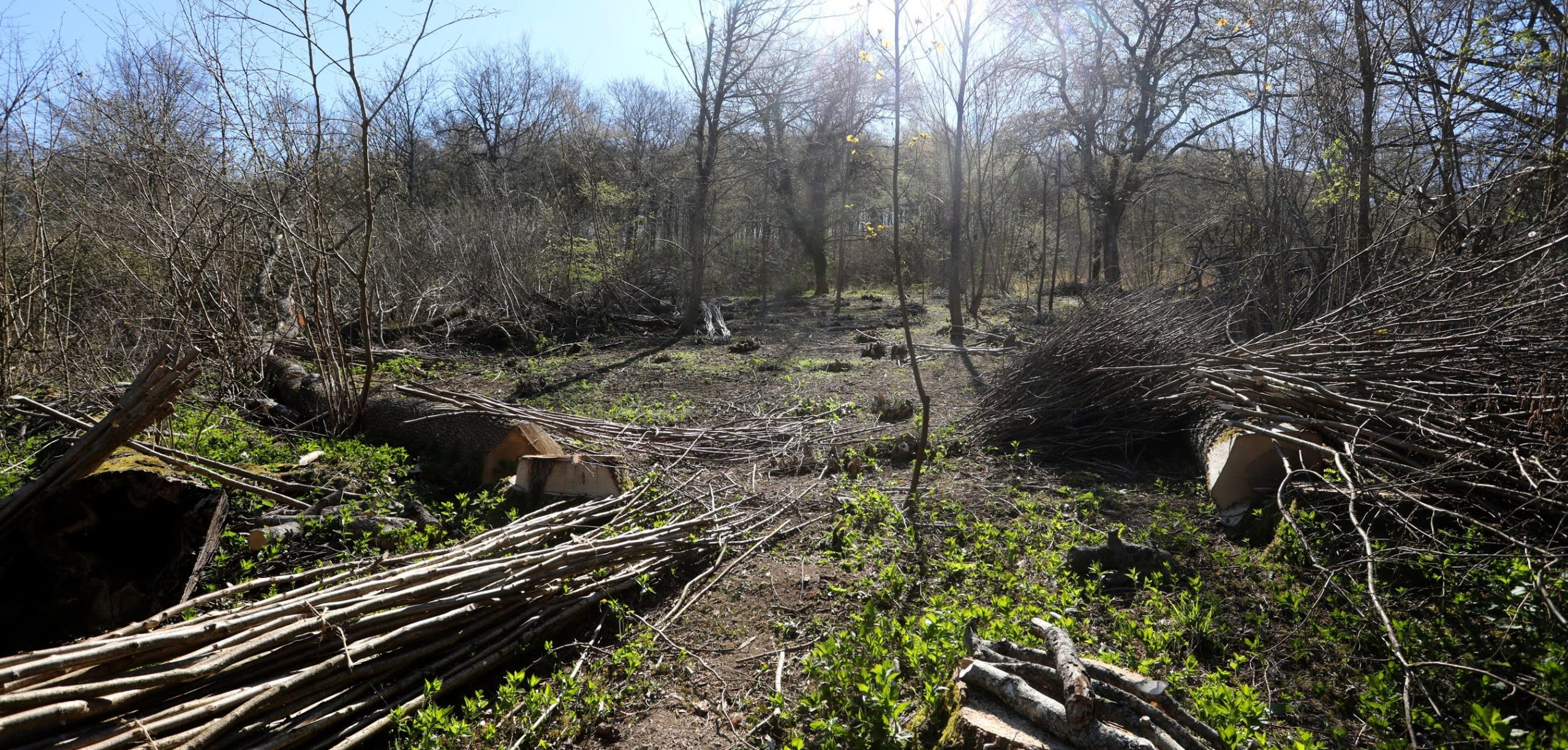
In the Museum’s early days the hillside at the top of the site was covered with mature beech trees. These were felled for timber, but regeneration of a wide variety of species has since taken place.
In years to come the hillside will again be covered with mature trees, but this time ash, beech, hornbeam and sycamore will form mixed woodland.
Within the woodland there is an area of hazel coppice. In a coppice, poles are cut every few years, leaving a ‘stool’ from which a fresh crop of poles will grow. Many species of tree have been coppiced, but today only hazel and chestnut are cut commercially.
Coppiced woodlands were once of considerable importance in the rural economy, especially for fuel and fencing and the young wood provided the raw material for many products. Coppiced hazel was used to make hurdles for sheep enclosures, feeding cages, wattle panels in timber-framed buildings, the hoops of barrels used to hold dry products, and for many other purposes.
Our woodland provides the firewood used in some of our exhibit houses and the Tudor kitchen. The process of harvesting, collecting and stacking wood offers us an insight into the labour demands of domestic fuel consumption in the pre-modern period.
In a clearing you will discover a traditional charcoal burners’ camp and a wood yard with sawpits, mechanical saws and a crane from a much later period when automation was applied to timber processing. On some days you may see these machines in action powered by traditional steam engines.







